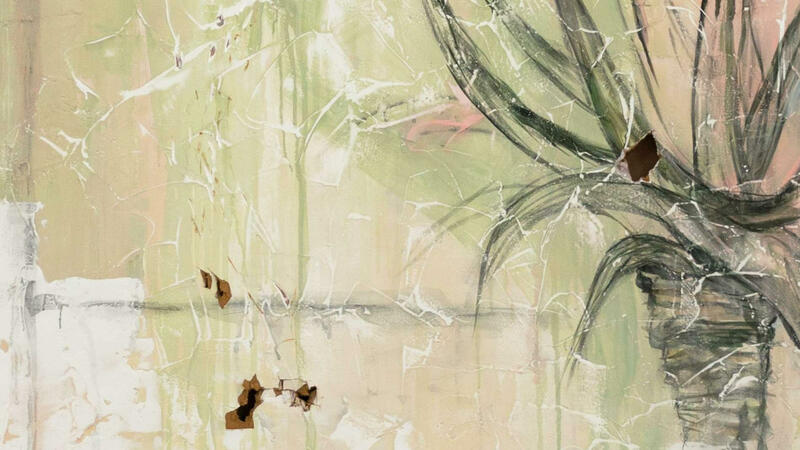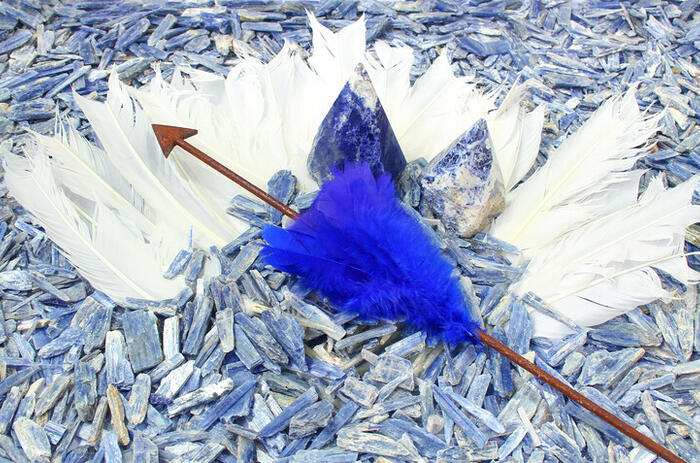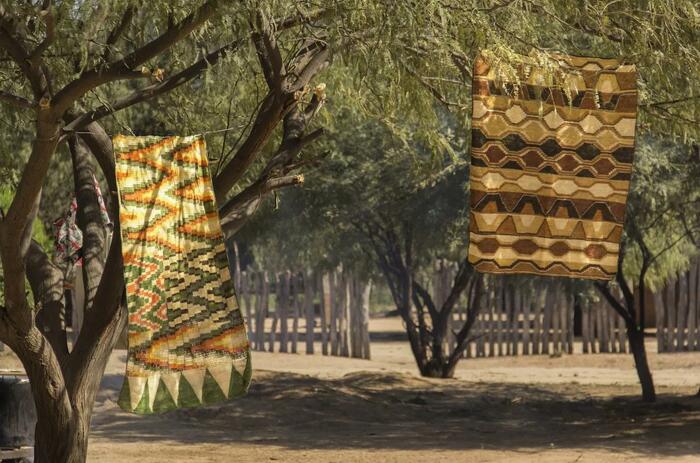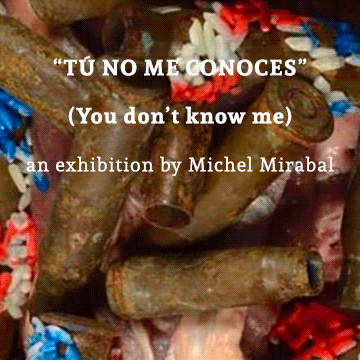ANA TISCORNIA: NEIGHBORS
For those of us who have followed the creative paths of Ana Tiscornia, we are very familiar with the many inventive forms and materials the artist has employed to refer to the architecture of place. The architecture of place may have been a building or a section of it; it may have been a street. Esquina / Corner of 2010, for example, is a complex paper collage of cut-out floor plans, densely layered to represent collapsed structures. This collage features a small red dot signaling the end of a street, a specific place no longer recognizable.

In the new exhibition Neighbors, Tiscornia presents a new series of paintings. Creatively expanded in size, scale, materials, and signifying interpretations of generally unrecognized architectural structures, the artist’s successful explorations define a multifaceted sense of diverse references and concerns about home, where one should feel a sense of belonging, protection, security, and shelter.
Neighbors, the eponymous title of the exhibition, is created by assembling two shaped panels with barely visible drawings and fragments of fabrics on plaster and acrylic surfaces. Looking at the division of the two panels, the viewer reckons with the emotional and physical dislocation erasure must have had on its residents and their surroundings. Whatever architectural form the building had prior to its ruin, we are reminded that “neighbors” once lived there, and they are now missing.
I felt a similar sensibility when viewing Next to the Empty Room. The room, or at least part of it, is constructed with positive and negative spaces recalling colors and fragments of fabrics in spaces we once knew. The structure speaks of a habitat, now empty. Other Blue House is a floor plan defined by cut-out shaped panels, a drawing of a door, perhaps a fence, and a piece of fabric. The wood panel is beautifully mottled with layers of plaster and acrylic that have been applied and scrapped numerous times so that the underlying images are no longer identifiable. A small piece of fabric connects the blue and lime green panels. One may imagine what the house might have looked like when it was intact. Nevertheless, unlike the two previous works, the floor plan of Other Blue House conjures a sense of mystery more than a sense of calamity.
A red line, a phrase used to mean a figurative point of no return, is the title of another engaging image of a floor plan suffused with political references that Tiscornia has long addressed. As a witness to the years of the dictatorship in Uruguay as well as her awareness of ongoing global wars, Red Line speaks somewhat more directly to the act of destruction resulting from the artist’s process of cutting the right side of the sheetrock panel leaving jagged its edges. There are two leitmotifs in this work, a small piece of cloth and a partial image of a cactus that apart from their arresting visuality are metonyms for memory and resistance.
-
Ana Tiscornia. Next to the Empty Room, 2023. Plaster, acrylic, and linen on panel, 16.5 x 24 x 1 inches (41.9 x 61 x 2.5 cm)
-
Ana Tiscornia. Other Blue House, 2024. Plaster, acrylic and fabric on panel, 16.5 x 30.25 inches (41.9 x 76.8 cm)
-
Ana Tiscornia. Red Line, 2024. Plaster, acrylic on panel, 24.25 x 19.75 inches (61.6 x 50.2 cm)
Cacti are full blown images in several large scale paintings in the exhibition. The plants are eye-catching and insistingly notable. (As an aside, I was also captivated by the presence of real cacti located in different places on the gallery’s floor. They reified the visual and conceptual relationship to the painted motifs.) Other Landscape II features two large cacti on the sides of two wooden panel doors. The diptych begs to be opened. The mottled, painterly pink surface, overlayed numerous times with layers of plaster and acrylic obscures many hand-drawn images conjuring a sense mystery. Who lived behind the doors? Where do they lead? What is the meaning of their isolation? At first glance, the overall impression is that the painting is an unusually beautiful landscape. At closer inspection however, we notice the many small punctures on the surface, reminding us of rupture and damage. In the context of a landscape, the motif of the cacti is unusual. Since cacti need very little water to survive, they are perceived as being hardy. Since cacti need very little cultivation to grow, they are self-maintaining. Since cacti grow in harsh landscapes, they are resistant.
Tiscornia has created Neighbors with a visual and material vocabulary that awakens our sensibilities to both delicacy and tension; destruction and repair; memory and presence; existence and struggle. Therein lies the strength of Tisconia’s vision for those who once lived nearby.
Born in Montevideo, Uruguay in 1951, Ana Tiscornia lives and works in New York. She represented Uruguay at the second and Ninth Biennial of Havana, Cuba, and at the III Biennial of Lima, Peru. Select exhibitions include: Parque de la Memoria, Buenos Aires, Argentina (2022-23); Espacio Minimo, Madrid, Spain (2021); OMI Architecture, Ghent, NY (2018); Contemporary Art Museum of Buenos Aires (MACBA), Argentina (2018); Figari Museum, Montevideo, Uruguay (2017); MUHAR Museum of Art History, Montevideo, Uruguay (2017); National Museum of Visual Arts, Montevideo, Uruguay (2015); Gurvich Museum, Montevideo, Uruguay (2017); Columbia University, New York, NY (2013).
Between 1998 and 2015 Tiscornia curated several exhibitions. Among them is La Guerra Que No Hemos Visto, a project of the Colombian artist Juan Manuel Echavarria, exhibited at Museo de Arte Moderno de Bogota, Colombia. She has received such honors as the Prize Asociación Argentina de Críticos de Arte, Buenos Aires, Argentina (2004) and the Pollock-Krasner Foundation Grant (2000). Ana Tiscornia collaborates with Liliana Porter in videos and theatre productions.
April 8 to May 10, 2025 at the Bienvenu Steinberg & C in New York.












